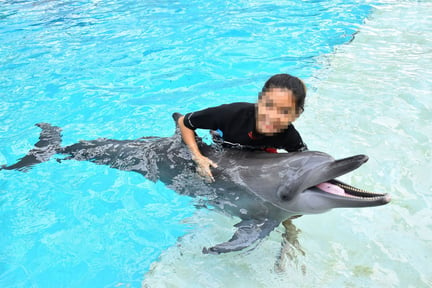
To mark the 10th annual World Rabies Day, we’re taking a look at the great changes our Better lives for dogs campaign has achieved for dogs, thanks to amazing supporters like you
An ancient disease
Rabies was first recorded in 2000 BC, making it one of the oldest diseases known to man.
The virus enters the body, most commonly through the bite of a rabid dog. It then travels through the central nervous system, and eventually hijacks the brain.
Once these symptoms start to show, death is inevitable.
Tens of thousands of people still die from rabies, despite the fact it’s an entirely preventable disease.
The forgotten victims
When dogs contract rabies, they suffer a violent, distressing death. However, many millions of dogs also suffer cruelty at the hands of governments and local communities who are fearful of the disease.
Since 2011, we have campaigned to end the inhumane culling of dogs in the name of rabies.
Building better lives for dogs
Here are just five of our biggest campaign successes for dogs since Better lives for dogs launched:
-
Over one million vaccinations given to dogs: From Sierra Leone to the Philippines, we’ve worked with governments to administer over one million rabies vaccinations to dogs. This means countless people have been protected from rabies, and many more dogs have been protected from the threat of violent culls in its name.
-
Putting Zanzibar on the path to eliminating rabies for good: Zanzibar is home to 10,000 dogs. Before our intervention, dogs were indiscriminately shot in response to rabies outbreaks. We supported the government to vaccinate dogs and improve responsible dog ownership on the island. No human rabies cases have been reported on the island since 2013, and dogs are no longer culled in attempts to control the disease.
-
Kenya announces Africa’s first ever rabies elimination strategy: Kenya bears the burden of an estimated 2,000 human rabies cases. Outbreaks of rabies were previously met with random, ineffective vaccination of dogs, coupled with shooting and poisoning.
In 2014, we worked with the government to write an effective and humane strategy to eliminate the disease through vaccination and population management. We are working in Makueni county, which has one of the highest rates of rabies in Kenya, to show that this approach is effective.
So far, we’ve vaccinated over 50,000 dogs against rabies and trained 59 teachers, four Senior Education Officers and four Veterinary and Livestock Extension Officers on responsible dog ownership, dog bite prevention and rabies elimination.
-
A brighter future for China’s dogs: We vaccinated over 90,000 dogs in three pilot sites in China to prove that vaccination is more effective than the inhumane culling dogs. And the proof is in the pudding, with no human rabies cases being reported in any of the vaccination sites.
The successes of the project are being used to draft national guidelines on controlling rabies across the country.
-
Putting an end to dog poisoning in Bangladesh: Bangladesh used to have one of the highest rates of human rabies cases in the world. Bangladeshi authorities responded by killing as many dogs as they could.
We lobbied the government to put an end to this ineffective and inhumane approach. Since 2011, we have worked with the government to vaccinate hundreds of thousands of dogs. And human rabies deaths are rapidly falling.
We have also worked to get agreement from local governments that culling will not be part of rabies control in their areas, meaning no dogs will face violent deaths in the name of rabies.
The future of rabies control
At the end of December 2015, major global organisations, including the World Health Organisation (WHO), committed to ending rabies by 2030.
There is still a huge amount of work to do to reach this goal. We’ll continue to focus our efforts where dogs face the greatest threat to their lives.
Right now, we are working towards protecting the lives of 100,000 dogs in Sierra Leone. Rabies is a daily threat. And the country’s capital, Freetown, has one of the highest densities of stray dogs in the whole of Africa.
Related content
Animals in Communities
Helping governments to manage dog populations humanely and to vaccinate against rabies, instead of culling animals - especially dogs.
Past campaigns
Learn about some of the achievements we've made for animals in the last 50 years.
Our campaigns
Discover the work we're doing to end animal cruelty. Forever.


